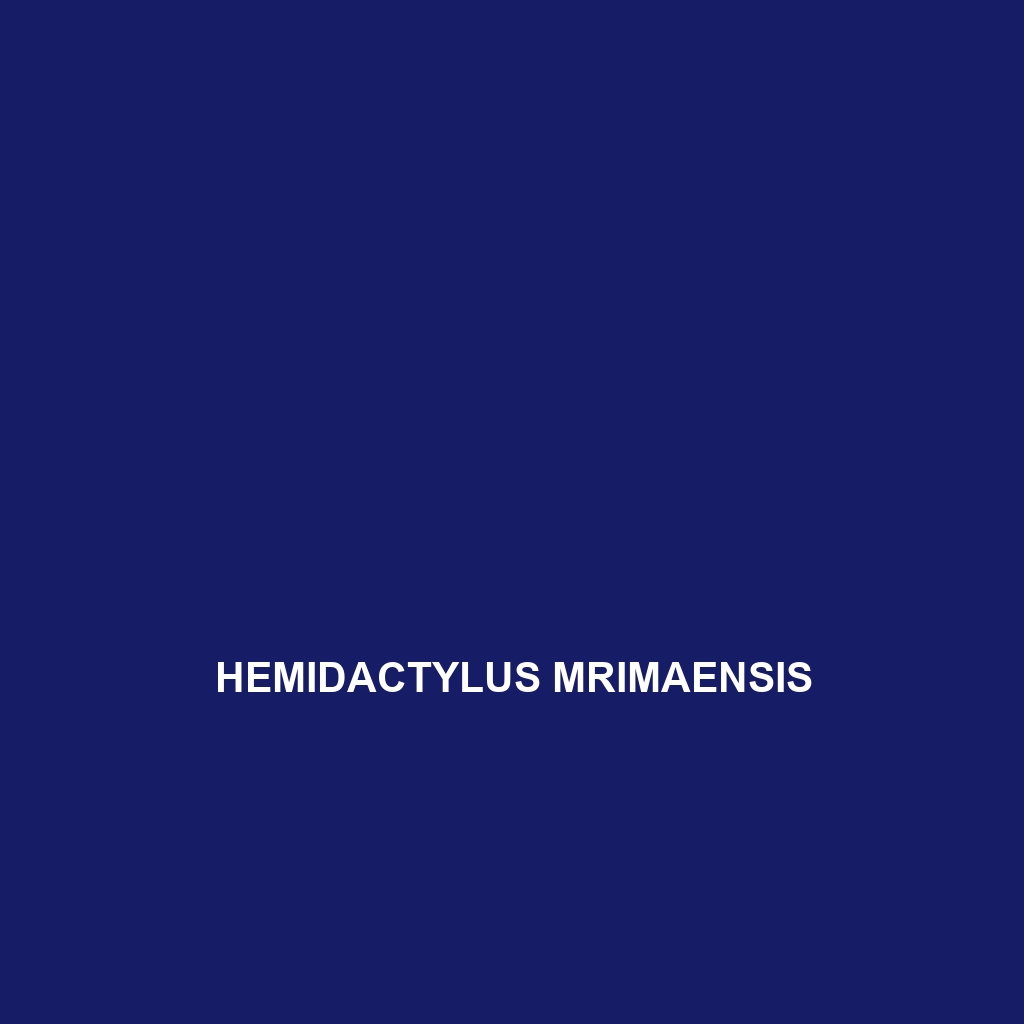Common Name
Hemidactylus mrimaensis
Scientific Name
Hemidactylus mrimaensis
Habitat
Hemidactylus mrimaensis is primarily found in the coastal region of Kenya, specifically in the Mrima Hill area. This unique habitat encompasses various ecosystems including tropical rainforests and savannas. The climate in this region is characterized by high humidity and temperatures, fostering an environment rich in biodiversity. Additionally, this species is often found in areas with marine habitats nearby, as these environments facilitate their feeding and breeding behaviors. The combination of these different ecological zones provides the necessary resources for their survival, making it an ideal habitat for this gecko.
Physical Characteristics
Hemidactylus mrimaensis exhibits distinctive physical traits that set it apart from other gecko species. This gecko typically measures about 10 to 15 centimeters in length, with a slender body adapted for agile movement through trees and rocks. Its coloration is a blend of browns and greens, allowing for effective camouflage against the foliage and bark in its natural habitat. One of the most striking features of this species is its well-developed toe pads that facilitate climbing and gripping onto various surfaces. Additionally, the skin texture includes small tubercles and granular scales, which contribute to its unique appearance and adaptability.
Behavior
This species is primarily nocturnal, which means that it is most active during the night. Hemidactylus mrimaensis engages in a variety of behaviors, including territorial displays and social interactions during mating seasons. Males are known to exhibit vibrant courtship behaviors such as head bobbing and vocalizations to attract females. These geckos also have a unique climbing ability and often venture high up into trees, seeking out insects, their primary food source. While they live solitarily, they can sometimes be observed in small groups, especially in areas rich in resources.
Diet
Hemidactylus mrimaensis is classified as an insectivore, primarily feeding on a diet consisting of various insects, including crickets, moths, and beetles. Their hunting strategy involves a sit-and-wait approach, where they use their excellent camouflage to ambush unsuspecting prey. This gecko plays a significant role in controlling insect populations in its ecosystem. The availability of food sources is crucial for its survival, particularly during the mating season when energy requirements increase.
Reproduction
The reproductive cycle of Hemidactylus mrimaensis is fascinating. This species usually breeds during the warmer months when temperatures and humidity levels are optimal. Females lay two eggs, which are often hidden under rocks or in crevices to protect them from predators. The gestation period varies but typically lasts around 30 days, after which the young emerge miniature versions of their parents. Parental care is minimal, with the female leaving the eggs shortly after laying them. However, the choice of nesting sites is strategic to improve the survival rate of the hatchlings.
Conservation Status
The conservation status of Hemidactylus mrimaensis is currently listed as vulnerable due to habitat loss and environmental changes driven by human activities such as logging and urban development. Conservation efforts are being made to protect this gecko’s natural habitat, including initiatives to preserve the forests in the Mrima Hill area. However, challenges remain, particularly regarding climate change and increased human encroachment into natural areas.
Interesting Facts
Hemidactylus mrimaensis possesses unique adaptations that allow it to thrive in its environment. For example, this gecko has the ability to change its color slightly depending on the surrounding environment, enhancing its camouflage. Another interesting fact is that they can shed their tails when threatened, a behavior known as autotomy, which allows them to escape predators while leaving a part of their body behind. This regeneration phenomenon highlights their resilience and adaptability in the wild.
Role in Ecosystem
Hemidactylus mrimaensis plays a significant role in its ecosystem as a predator of insects, thus helping to maintain the balance of insect populations. Additionally, by serving as prey for larger predators, it contributes to the food web dynamics within its habitat. These geckos are also important for maintaining the health of their ecosystem by participating in pollination processes, even as primarily insectivores. Their presence indicates a healthy, functioning environment, showcasing their role as a keystone species within the rich biodiversity of coastal Kenya.
